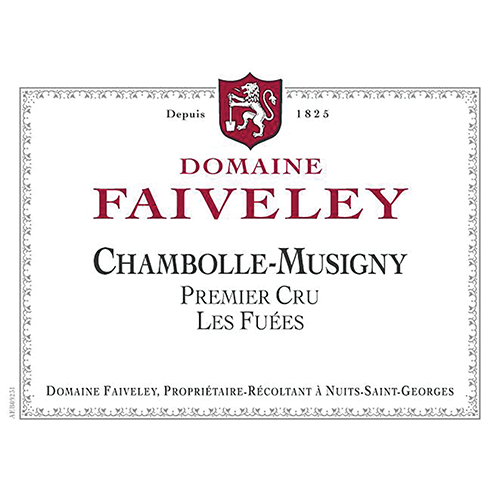
Domaine Faiveley
Chambolle-Musigny Premier Cru Les Fuées
The “Les Fuées” parcel is situated in the North of the village, just after Bonnes-Mares Grand Cru.
This 0.19-hectare plot, planted in 1944, 2011, on clay–limestone soils, with a east and southeast exposure, and is cultivated using organic farming practices.
- Region
- Bourgogne
- Appellation
- Côte de Nuits
- Sub-Appellation
- Chambolle-Musigny Premier Cru AOP
- Varietal Composition
- Pinot Noir
- Aging
- 16 months in French oak barrels, 40-50% new oak, 50-60% second fill barrels.
- Alcohol
- 13%
Intense ruby red hue. The nose reveals intense and complex aromas of ripe fruits underpinned by a touch of smoke and spice. The smooth attack gives way to a full-bodied, elegant palate.




